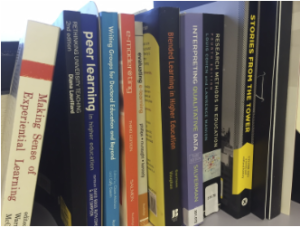Tips on preparing and assigning reading work
A typical subject would assign one or more weekly readings from a variety of sources including class texts, scholarly journal articles, contemporary news articles and Blog posts from reputable sources. These can be sourced and managed by the UTS Library via the Digital Resource Register. Links can be made available to students through your UTSOnline Subject space.
But it is not enough to assign readings to students. Many will not do the reading unless they understand the relevance. Often they don’t know where to start or how to use the information and some students don’t believe that reading ‘counts’.
Tell students:
- how much time they are expected to spend on reading PER WEEK
- the purpose of the reading – which links to
- what they need to do with the information in the reading(s)
- which readings are optional and which are mandatory
It may be useful to provide students with:
- a glossary of terms
- reading guides
- pre-reading questions
Remember also to choose level-appropriate readings. Students need to be challenged but not overwhelmed. If the reading is a very difficult one, adapt the task. Design a task that:
- discourages students from spending too much time on irrelevant parts of the reading (Some students often waste time translating every new word they find)
- focuses reading on key concepts
- is easy but leads to a meaningful in class activity – e.g. ‘Select a/one/some quote you can use in the assignment.’ or ‘Find a key concept you want to ask questions about in class
- include quiz questions that are deliberately easy and one or two that are more difficult.
Another strategy is to create a series of questions, some of which are easy and some more challenging. This way the weaker students can get some sense of achievement while the advanced students choose a challenging question to find an answer to. In a quiz, questions could be quickly weighted to reflect this, thus introducing a gamification technique.
Combining technologies with reading
There are technologies that can help students complete reading. Try A.nnotate
for example for group/social reading. A Facebook group or UTSOnline discussion forum can be setup where students can discuss and ask each other questions about the reading.
As an adjunct to written texts, assign alternative presentation of concepts such as TED talks or other reputable videos. These can provide support or context for the readings.
Your Academic Language and Learning Group Faculty Liaison can help you design classes to actively engage students with assigned reading as well as advising on choice of readings.
Encouraging pre-class reading
If you want your students to complete readings before class, ensure that you have explained this clearly in the previous class and/or the subject outline (under the section on learning and teaching strategy). For more information see this resource “getting students to prepare”.
The secret to successful reading is developing a shared responsibility for the teaching-learning process, utilising resources that work for both you and your students.